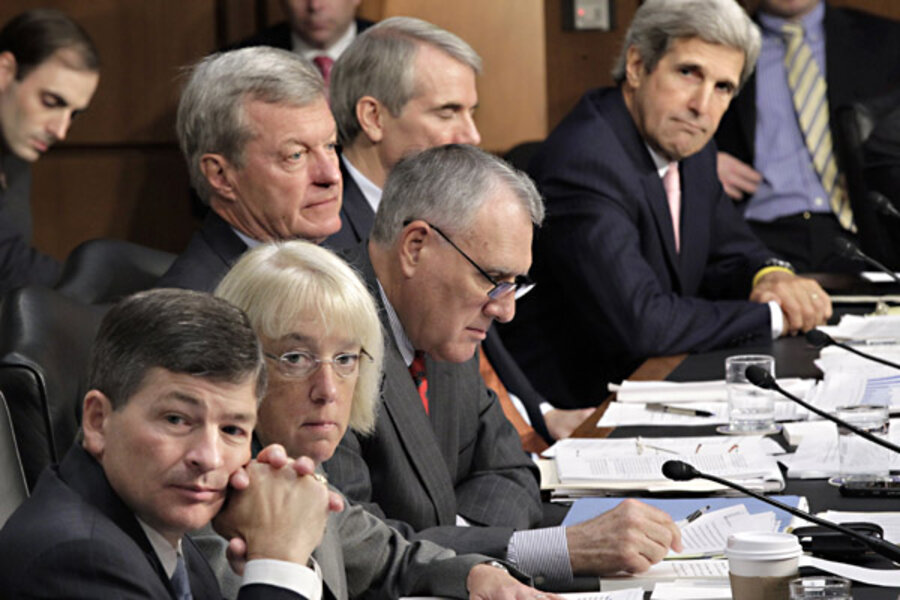The US fiscal situation can be solved
Loading...
Although the “super committee” was by all accounts a “super failure,” the U.S. is fortunate that we are not yet in full blown “crisis” mode. Our fiscal situation–namely, the large and economically unsustainable mismatch between spending and revenues–is still just a “problem” that can be solved. Our deficits are still being “sustained” at the moment, and U.S. Treasury bonds still look like the world’s safest investment, thank goodness.
But we’re on the path to the end of the fiscal sustainability cliff, the edge of which we won’t see until we’re likely past it, given how full-speed-ahead we seem to be running toward that unknown edge. (Think Wile E. Coyote chasing the Road Runner.) So it’s time to at least change the momentum, even if we can’t so easily just change direction.
The super committee’s failure was a political one. The super committee’s task was, and still is, a rather uncomplicated economic one. Given the political constraints and what we’ve learned about what doesn’t work (putting decisions in the hands of politicians currently in office), slowing down the race to the edge of the fiscal cliff will require getting the public more involved.
Here’s how Concord Coalition’s Bob Bixby explained what has to be done in a recent CNN-Money column:
Under current law, $1.2 trillion in spending cuts triggered by the super committee’s failure would take effect and $4.7 trillion in tax cuts would expire, raising government revenue by significant amounts and lowering future interest costs. According to the Congressional Budget Office, this would bring the budget into “primary balance” — meaning that revenues would cover all spending except for interest payments — by 2014. The national debt would come down somewhat from 67% to 61% of the economy. More would need to be done, but that’s not a bad start.
There are problems with sticking to the exact policies and timing of current law, including legitimate short-term economic concerns. Nor should the brunt of any deficit reduction plan be placed on those who can least afford it.
To accommodate those circumstances, Congress could make some changes in the mix and timing of policies but still aim to keep the 10-year deficit-reduction total from current law on track.
Government projections assume the $1.2 trillion in savings Congress intended to back up the super committee, and financial markets are counting on them. Repealing the trigger or reducing its impact would further erode congressional credibility and possibly lead to another downgrade of the nation’s credit rating.
There is still time for Washington to get things right before expensive, deficit-financed policies are extended. A commitment to a process that enforces strict pay-as-you-go rules and guides policies toward the deficit reduction in current law would help.
And how the public’s involvement is needed:
The Concord Coalition’s deficit-reduction exercises and other public engagement efforts in cities across the country have consistently shown that people of all ages and varied ideologies are willing to make hard budget choices — as long as there is shared sacrifice, with everything on the table.
Members of Congress with differing viewpoints should pair up for “two-by-two” fiscal forums in which they present agreed-upon facts and engage with each other’s constituents about budget options. Such forums would broaden understanding of the key issues and promote civic discourse about solutions.
A good example was set earlier this year by Senators Mark Warner, a Democrat from Virginia, and Saxby Chambliss, a Republican from Georgia. The two held joint forums in Richmond and Atlanta.
Back in Washington, members should also pair up in co-sponsoring bipartisan plans to address the deficit, with or without the support of congressional leaders. Efforts such as the Senate’s “Gang of Six” should be revived and expanded. The logical place to start is with the recommendations of the Bowles-Simpson and Rivlin-Domenici commissions.
Congress is now debating the extension of both unemployment benefits and payroll tax cuts. Both policies are typically deficit financed because they are intended as policies that will stimulate the demand for goods and services–lack of demand being the binding constraint in an economy with high unemployment and other idle resources. The current debate is less over the desire of politicians to extend those policies (most on both sides say “yes”) and more about whether these policies can be and should be paid for–if their cost can be offset with spending cuts or revenue increases that take place more slowly over the next ten years and do not “neuter” the stimulative effect of the original policies. Yes, this is indeed possible, with some offsets making more sense than others. Of course, the Republicans would prefer the offsets be spending cuts, while the Democrats would prefer they be tax increases on the rich. So here we are, right back to the same old debate–and the same old (mostly political) “sticking point.”
My colleague Josh Gordon and I briefly discuss the “what now” in this video. Bob appeared live on C-SPAN on Thanksgiving morning with an excellent call-in interview, as well.
I plan to write a bit more about the payroll tax cut and proposed offsets within the next few days, so please stay tuned.
And if you like what you read/watch here about the Concord Coalition’s initiatives, please make me happy and “like” us (and follow our activities and join us in our efforts) on Facebook, and become a member/get on our mailing list on our website.





